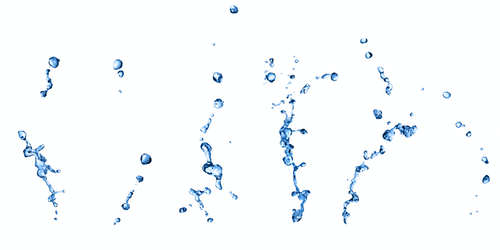Droplet Shape Reveals Contaminants
When a droplet of one fluid flows through another fluid, its shape oscillates. These oscillations depend on the elasticity of the droplet, which in turn depends on whether the interface between the droplet and the surrounding fluid contains contaminants. Now, Benjamin Lalanne of the University of Toulouse, France, and colleagues present a method that uses this relationship to determine how much contamination sits on a droplet’s surface. They say that their method could be useful in industrial applications, such as those that use chemical reactors, as well as in research situations where knowing a system’s contamination level could allow for more controlled experiments.
About 30 years ago, researchers explained droplet shape oscillations using Gibbs elasticity—the ability of a droplet’s surface to stretch and deform. This theory predicts that the presence of contaminants significantly increases the damping rate of the oscillations. Others have tested and confirmed the theory by observing the oscillations of droplets with contaminated surfaces in experiments conducted under microgravity conditions. But the theory’s validity under Earth gravity conditions was unknown: Researchers thought that rising through a fluid—as a droplet would do when buoyancy and gravity are in play—would affect a droplet’s shape oscillations so that its Gibbs elasticity couldn’t be inferred.
Lalanne and colleagues ran numerical simulations of a contaminated droplet both with and without the effects of gravity. They found that gravity has a negligible effect on shape oscillations. They propose that recording the changing shape of a moving droplet with a high-speed camera would allow an observer to infer the Gibbs elasticity of the droplet and thus the concentration of contaminants on its surface—even without microgravity conditions, which are expensive to achieve.
This research is published in Physical Review Letters.
–Erika K. Carlson
Erika K. Carlson is a Corresponding Editor for Physics based in Brooklyn, New York.




